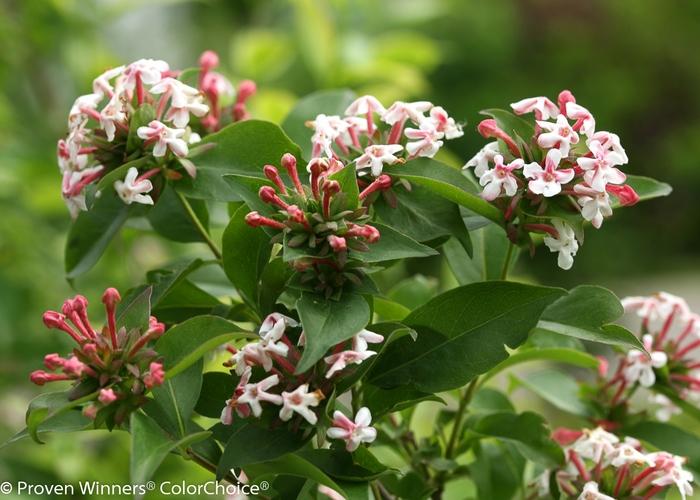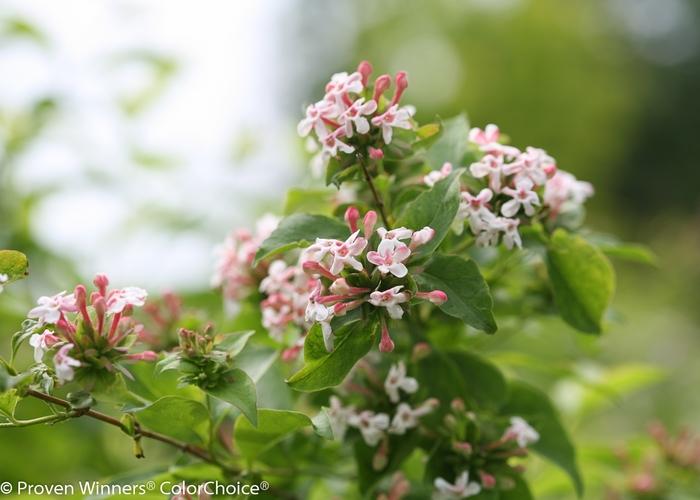



Plant Calculator
Enter the approximate length and width of the area you will be planting and click 'Calculate' to determine how many Abelia mosanensis 'Sweet Emotion®' you will need.
*Correct and successful spacing is complex and depends on project conditions.
Color Choice®
Abelia mosanensis 'Sweet Emotion®'
Hardy Abelia
Make spring even sweeter with Sweet Emotion abelia! It’s not like any other abelia: hardy to USDA zone 4, with mid-spring flowers that give off the most intoxicating jasmine scent. Deep pink buds open to reveal white and pink flowers. They attract butterflies and make a very nice cut flower. In autumn, foliage turns a nice orange color. Grow this very special abelia as a hedge or specimen, or include it in your flower garden.
- Delightful plant with a spicy-sweet fragrance
- Super hardy
- Dark, reddish-pink flower buds
- Glossy summer foliage
- Attractive orange-red fall color

- Category: Shrubs
- Patent: PP27370, CPBR 5937
- Breeder: Proven Winners
- Hardiness Zone: 4-8
- Height: 5-6 ft
- Spread: 5-6 ft
- Spacing: 60-84 in
- Bloom Color: White
- Foliage Color: Green
| Item | Size | Avail | Your Price | Qty |
|---|---|---|---|---|
|
GWSWEBABSE02
In Bloom |
2 Gal | In Stock | $38.00 | |
| GWSWEBABSE03 | 3 Gal | In Stock | $46.00 | |
| GWS009687 | 5 Gal | Not Avail | $119.00 |
GWSWEBABSE02
In BloomGWSWEBABSE03
GWS009687
Foliage Color
| • | Green |
Soil Moisture
| • | Average Water |
Attributes
| • | Border or Bed |
| • | Drought Tolerant |
| • | Fall Color |
| • | Focal Point |
| • | Fragrant |
| • | Great Foliage |
| • | Low Maintenance |
| • | Specimen |
Habit
| • | Upright |
Season of Interest (Flowering)
| • | Spring |
Additional Information about Abelia mosanensis Color Choice® 'Sweet Emotion®'
Hardy and fragrant
It’s time to rethink abelia. This hardy shrub thrives in the North and South, and will delight homeowners with its spicy sweet late spring blooms. Orange-red fall foliage gives it multi-season appeal. An unusual addition to gardens and landscapes.
Growing & Maintenance Tips for Abelia mosanensis Color Choice® 'Sweet Emotion®'
Light: Full sun (6+ hrs/day) is best, but can grow and bloom well in part sun (4-6 hrs sun/day).
Soil: Any average, well-drained soil will do.
Water: Average water needs. Some drought tolerance once established, but if it gets very dry during its bloom time, flowering will be compromised.
Fertilizing: Nothing special is required. One application of a granular fertilizer formulated for shrubs is sufficient.
Pruning: Little needed; if desired, prune to shape immediately after flowering.




